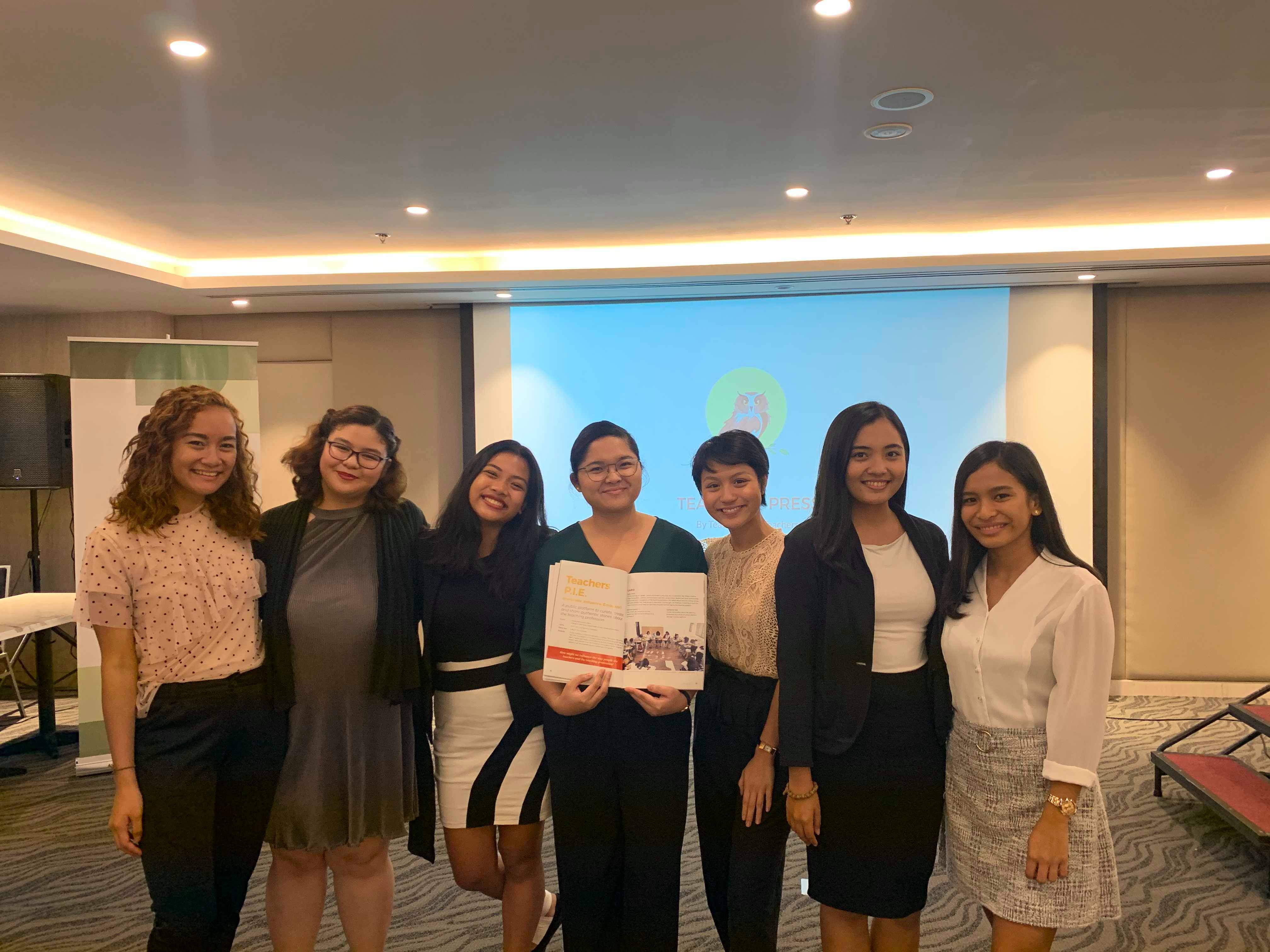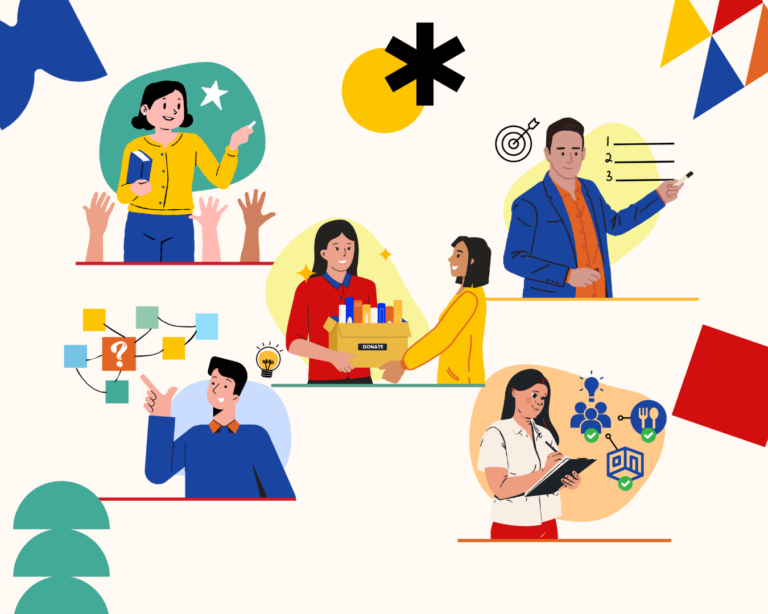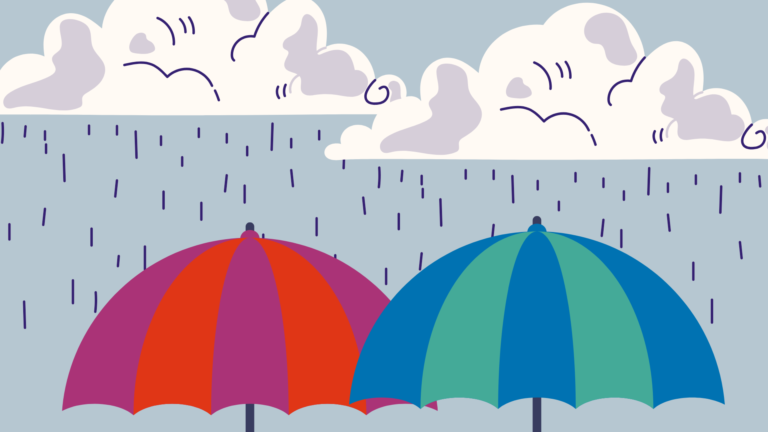Hi, I’m Celina! Some of you might know me as a Habi Learning Experience Designer (LXD), but I also spend my days in the classroom as an instructor at the Miriam College, College of Education. This lab note is my story as a Habi participant, specifically sharing my Project-Based Learning journey.
I clearly remember that day in Luxent Hotel in January 2018 – I had just joined the Miriam College Higher Education Faculty and I was invited to attend a workshop on Project-Based Learning (PBL). PBL, or what we referred to as the “Project Approach” back in my kindergarten teaching years, was something my 5-year-olds and I thoroughly enjoyed. As a student, my memories of projects were crocheted table runners and exploding paper mache volcanoes. However, PBL redefined school projects—with my young students orchestrating their own rock concert and composing a song which was later used as a Save the Dolphins advocacy video in schools.
PBL is authentic learning and assessment. At the start of the project process, students formulate a driving question which they strive to answer throughout the quarter or semester. At the end of the project process, students present what they have learned by creating an output which is shared with the public. I saw how PBL works with young children then, but how does it work with adult learners?
In our first workshop with Habi, we were introduced to a lesson template that allowed us to use the Buck Institute for Education’s PBL Gold Standards Framework in a simple, localized way. This made it easier for the faculty to use a common language for preparing different elements of PBL lessons. In the spirit of rapid prototyping (one of the Design Thinking mindsets we learned), all these plans were immediately put to practice in my first semester of teaching.
In my first semester, I taught Foundations of Early Childhood Education and Curriculum Development. When I experienced these subjects as a student, most of the work required of me involved reading, memorizing names and theories, doing document analysis and writing academic essays. Don’t get me wrong–those tasks helped me appreciate our content deeply. However, it also left me wondering how useful my outputs were, if and how my background knowledge in these subjects would make sense in the real world of teaching. This gap in pedagogies is what PBL offered to bridge.
Driving Question: How might our knowledge of the foundations of early childhood education influence our future teaching practice?
While learning about the beginnings of early childhood education and how children develop and learn, my students reflected on what these mean to them as pre-service teachers. The class initially crafted their teaching philosophies through academic essays. However, after opening up about their lack of confidence in their writing skills, we all decided to present the philosophies through creative outputs. They were then able to express their philosophies better in languages they felt comfortable with. This is how PBL highlights student voice, both in content and learning experiences.

Academic essays transformed into creative outputs such as storybooks, posters, puppet shows, spoken word poetry and songs and presented to the public to encourage teachers to reflect on their teaching philosophies
Driving Question: How might we develop a curriculum that is responsive to the needs of our selected early childhood settings?
Aside from studying definitions, theories and curriculum development models, my Curriculum Development class broke out into small groups to partner with different schools and non-government organizations to design their early childhood curriculum. PBL highlights solving problems in real-world contexts, ensuring that learning is relevant and authentic.

Presenting the final curriculum plan outputs at the Student Congress attended by different education stakeholders
We constantly got feedback from our students on their experiences with PBL. My students expressed how they were challenged to be working in real-world contexts. They were building their teaching portfolio as pre-service teachers, and developing curriculum plans for actual children. This motivated them to take their work seriously, and produce relevant, high quality projects. Those who preferred to work alone were also challenged by the collaborative nature of PBL so we made sure to accommodate this by allotting time during class hours for them to work on their projects.
After that semester of PBL implementation, our faculty regrouped in our second Habi workshop to reflect on our wins, challenges and areas for growth in using PBL, and set guiding principles to carry with us in the semesters to come. Another semester passed and we came together again for a third workshop which focused on documenting our PBL lessons. In May 2019, our faculty and Habi started weaving our PBL stories together into a Project-Based Learning Sourcebook!
So, how does Project-Based Learning work with adult learners? It was a journey to find answers to this question. It was a cycle of learning about how PBL is done, trying it out, failing, learning from these failures, listening to our students, restrategizing, implementing it with more intentionality, and now we’re ready to share our stories with you.
Last October 16, we launched “Project-Based Learning: A Sourcebook for Higher Education Faculty and Students” in partnership with REX Bookstore’s Teachers’ Press and Habi Education Lab. I cannot remember a prouder moment than witnessing the unveiling of the book that captures the College of Education’s hard (and heart) work, made possible not only through the efforts of my colleagues, but also through our students’ socially-relevant projects.

The 2nd year students proudly showcasing their Teachers P.I.E. project which is part of the sourcebook
What I appreciated most about my experience with PBL in Higher Education is that it was a highly collaborative process. The entire College of Education faculty was invested in transitioning to PBL, Habi constantly guided our team from PBL planning, implementation to documentation, and our students were always part of the process.
Have you already been using PBL in your classroom? Watch out for our upcoming sourcebook and do share your PBL stories with us, too!









